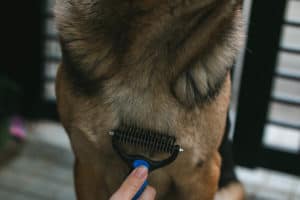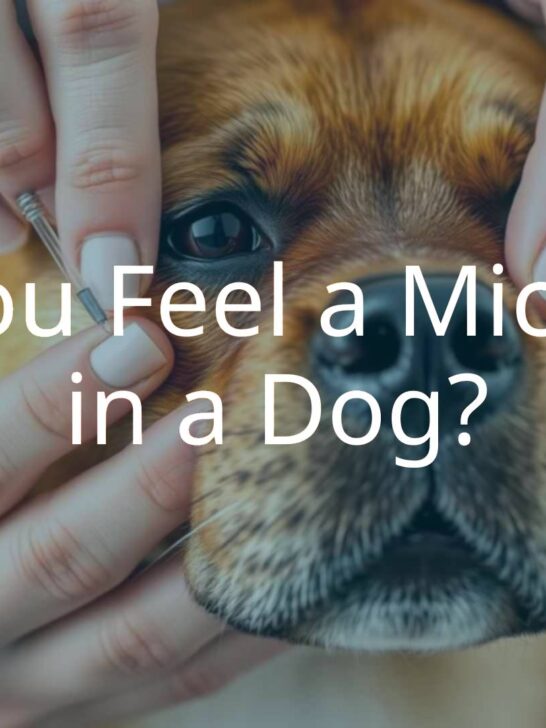How Rare Is Heterochromia in Dogs?
Heterochromia means having two different colored eyes or more than one color in a single eye. In dogs, this condition looks unusual but isn’t as rare as you might think, especially in certain breeds. It usually happens because of a lack of melanin, the pigment that gives eyes their color, so one eye might look blue or whitish-blue. While most dogs have eyes that are the same color, some breeds are more likely to have this unique feature.

Heterochromia isn’t just found in dogs-it can show up in cats, horses, and people too. In dogs, it’s usually harmless and inherited from their parents’ genes. For many dogs with these “ghost eyes” (a nickname some Native American groups use), it’s just a simple quirk, not a health problem. It shows how much variety exists in dog genetics.
How Common is Heterochromia in Dogs?
Getting an exact percentage for all dogs is hard, but heterochromia is generally not common in most dogs. Most have even melanin in their eyes, resulting in brown or golden colors. But for some breeds, heterochromia is actually expected and valued.
The genetics that cause heterochromia relate to how melanin is made and spread in the eyes. Some dogs get a gene mutation that affects this, leading to blue or differently colored eyes. Breeds with coat patterns like “merle” and “piebald” are more likely to have these genes, which is why heterochromia is much more common in these groups.
Heterochromia Compared to Other Animals
Across other animals, heterochromia isn’t very common, but it appears more often in pets than in people. For example, fewer than 200,000 people in the U.S. have it. Selective breeding in dogs and other domestic animals raises the chances of eye color mutations. Purebred cats (like the Turkish Van), horses (especially pintos), and even some cattle may show this trait. While it’s rare in random mixes, it’s quite normal among purebred dogs known for having it.
Why Certain Dog Breeds Have Heterochromia More Often
Some breeds get heterochromia more often because of their genetics, especially the merle and piebald genes linked to coat color patterns. The merle gene creates a mottled color patchwork and often brings blue eyes. The piebald gene creates white spots and also affects melanin, causing different colored eyes.
If a dog has a lot of white fur, especially on the head, it’s more likely to have heterochromia. That’s because fur and eye color genes are connected-less pigment in the fur near the eyes can mean less pigment in the eyes as well. Breeding for certain looks over many years has concentrated these traits in some breeds.
| Factor | Effect on Eye Color |
|---|---|
| Merle Gene | Often results in marbled coats and can lead to blue or differently colored eyes |
| Piebald Gene | Creates white patches on coat and can result in unique eye colors |
Which Dog Breeds Are Most Likely to Have Heterochromia?
Although any dog could have heterochromia, it’s much more common in certain breeds. These breeds often have specific coat colors and genetic backgrounds that make them prone to this trait. The Siberian Husky is probably the best-known breed with heterochromia-around 10-15% of Huskies show this trait, often with one blue and one brown eye.
The Australian Shepherd is another breed that often has mismatched eyes. Their eyes can be blue, amber, brown, or mixed, sometimes even showing several colors in one eye. The merle gene in Australian Shepherds helps explain why this trait appears so much in the breed. Dalmatians, usually with spots on white fur, also often have one blue and one brown eye.
Other Breeds That Often Have Heterochromia
- Border Collie: Some have genes for heterochromia, either from birth or developed later.
- Shetland Sheepdog (Sheltie): Occasionally show this, especially with merle coats.
- Great Dane: Harlequin or merle-coated Danes sometimes have different colored eyes.
- Catahoula Leopard Dog: Known for eyes in blue, green, amber, or “cracked” (with two colors in one iris).
- Dachshund (dapple pattern): Merle gene can make heterochromia more likely.
- Chihuahua and Shih Tzu: While less famous for it, they can have heterochromia as well.
Heterochromia in Mixed-Breed Dogs
Mixed-breed dogs can have heterochromia, but it’s not as common as in purebreds with the special coat genes. That’s because mixed breeds have a wider mix of different genes, making the exact combination for heterochromia less likely. However, if a mixed-breed dog has a parent with merle or piebald patterns, their chances go up. For example, a Husky mix might inherit a striking blue eye from its Husky lineage. Though uncommon, it’s always a pleasant surprise to see a mixed-breed dog with two different colored eyes.
Heterochromia in Dogs: Facts and Common Misunderstandings
Most of the time, heterochromia in dogs is harmless-just a result of genes affecting melanin. Dogs born with this condition usually have normal sight and healthy eyes. These traits don’t hurt the dog’s quality of life, and the main cause is just genetic variety in their breeds.
The type of heterochromia that appears later in a dog’s life (not from birth) could mean there’s a health problem, though. It might come from an injury, inflammation, or illness. If your dog’s eye color changes suddenly, especially as an adult, it’s a good idea to check with your vet. It could signal issues like glaucoma, uveitis, cataracts, or even tumors, all of which should be looked at by a professional.
Common Myths About Heterochromia
- Myth: Dogs with heterochromia are blind or have vision problems.
Reality: Most dogs with inherited heterochromia have normal eyesight. Sometimes the blue eye may be more sensitive to light, but it doesn’t mean the eye doesn’t work. - Myth: Heterochromia means the dog will have hearing problems.
Reality: Most breeds with heterochromia have normal hearing. The only major exception is Dalmatians with sectoral heterochromia-they have a higher rate of deafness, but this is due to the piebald gene, not the eye colors themselves.
A lot of these mistaken ideas come from stories or not knowing the true cause. Most dogs with odd-colored eyes are just as healthy as others-another example of just how unique dogs can be.






















